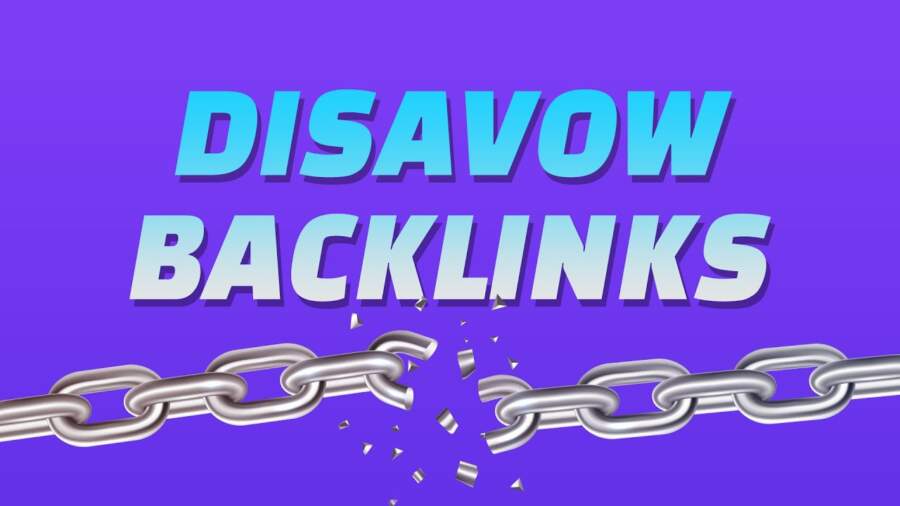Effective link building is integral to every successful search engine optimization (SEO) campaign. Whether you’re trying to strengthen your brand authority and reputation or attract referral site traffic, you need a powerful link-building strategy.
In the early days of SEO, website owners and marketers could’ve gotten away with black hat practices, such as buying links from suspicious websites. But today, search engine algorithms have evolved to detect such spammy backlinks.
Why Disavow Backlinks?
While high-quality backlinks are a blessing for your website, inferior and spammy links will take a toll on your website’s search engine ranking. Worse still, they could result in a manual penalty from Google and even get your website delisted from search engine results pages (SERPs).
The best way of avoiding such situations is to monitor your website’s inbound link profile and get rid of low-quality backlinks using Google’s Disavow Links tool. It’s a way of telling Google not to consider specific backlinks while assessing your website’s ranking.
If you’re running a business in Arizona, it’s a good idea to work with a Gilbert SEO company to eliminate bad backlinks. The right Gilbert SEO company will help you evaluate the quality of individual backlinks and identify the ones worth keeping.
Also, they’ll handhold you through the processes of contacting individual website admins to request the removal of specific backlinks. If the admins don’t act or respond, the SEO company will help you prepare and upload a list of suspicious backlinks to Google’s Disavow Links tool.
But you need to keep in mind that disavowing a superior quality backlink will take a toll on your website’s search engine rankings. It emphasizes the importance of determining whether a link is worth disavowing.
In the following sections, we’ll outline a few valuable steps to help you decide when to disavow a Backlink to your site. Let’s jump right in.
1. Look for a Manual Action Penalty
The simplest way is to check your Google Search Console dashboard for any manual action. Typically, Google’s reviewers issue a manual action when they detect any violation of the search engine’s guidelines.
If you receive a manual action, it’ll also specify the link. If you’re lucky, it’ll also explain the reason for the penalty.
Irrespective of whether Google gives a reason for a manual action, it’s best to disavow the corresponding link. Otherwise, you’ll risk your website’s search engine ranking and reputation.
2. Check the Domain Authority Score
The domain authority (DA) score of a website gives you an idea of its credibility and quality. Ideally, you should attract backlinks from websites with a high DA score.
The quickest way of checking a website’s DA score is to use Moz’s Link Explorer. It rates the domain authority on a scale of 1 to 100. A higher DA score is an indication of authenticity and authoritativeness.
It’s a good idea to disavow any backlinks that come from websites with a DA score of less than 20. Any backlinks from these websites will be considered low-quality and suspicious.
3. Focus on Indexing
Does your website have backlinks from a site that Google hasn’t even indexed? Then chances are the website was delisted by Google for violating its guidelines. Any inbound links from such websites will adversely affect your SEO campaign.
Enter site:website.com in the Google search bar to check whether the linking site is indexed. If the query doesn’t return any results, it indicates that Google has delisted or penalized the website. That, in turn, implies you should disavow any links from the site.
4. Analyze the Linking Site
It’s the most crucial step of determining whether to disavow a link. Start by running a Copyscape test for the linking site’s content to decide whether or not it’s plagiarized.
Also, watch out for other malicious practices, such as:
- Link cloaking
- Comment spam
- Thin content
- Hidden links
If the linking site uses one or more of these practices, you need to get rid of the corresponding backlinks. Also, check whether the linking web page has too many links to random websites. It’s another sign of backlink spam.
Lastly, check the user experience, speed, and mobile responsiveness of the website to determine whether it’s up to Google’s established standards.
Final Thoughts
Disavowing low-quality backlinks is essential for preserving the integrity of your website’s inbound link profile. From the link site’s DA score and content to page experience – you can evaluate various parameters to determine whether you’ve got a legit backlink. Also, don’t forget to check whether Google indexes the website or not.




































































